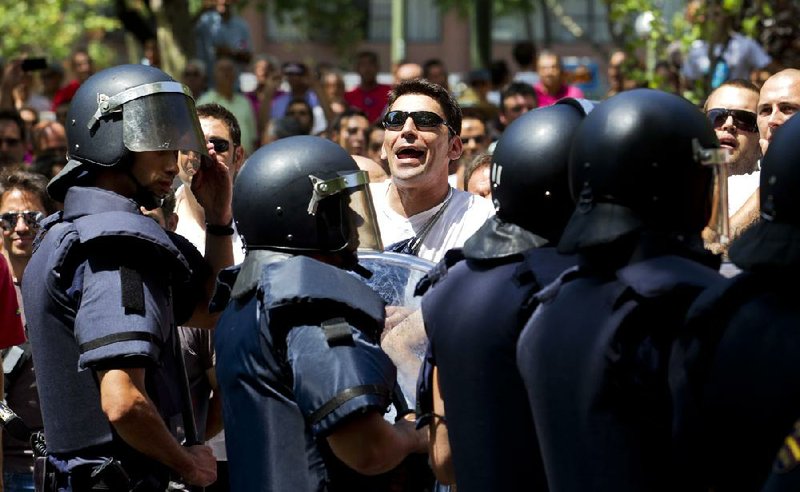MADRID, Spain — The number of unemployed keeps rising in Spain, official figures showed Friday, as the International Monetary Fund called on European leaders to quickly fulfill their promises to help the country and the 17-country eurozone.
The recession-hit country’s unemployment rate rose to 24.63 percent in the second quarter, up 0.19 percentage point from the previous three months, the National Statistics Institute said. The rate is the highest in the eurozone.
The institute said 53,500 more people joined the ranks of the unemployed between April and June, for a total 5.69 million people out of work.
For those under 25 years of age, the unemployment rate climbed to 53 percent, from 52 percent in the previous quarter.
Spain is battling to avoid having to seek a full-blown financial bailout as it struggles to emerge from its second recession in three years and strives to convince investors it can manage its finances.
The government is adamant it won’t need help.
“No rescue is going to be sought, the idea of a rescue is discarded,” Deputy Prime Minister Soraya Saenz de Santamaria said.
Spain has asked for as much as $125 billion in loans for its banks, which are laden with soured investments after a property-sector collapse in 2008. A sovereign bailout for Spain would be far larger.
The IMF, which has been involved in bailing out other European countries in recent years, said European leaders needed to complete changes and fix the flaws in the euro monetary union.
“The problems that Spain faces in the financial markets go beyond the country’s borders, and speak to the design flaws in the eurozone,” said James Daniel, IMF mission chief for Spain.
One of the measures European leaders promised — and would help Spain — is to create a European banking authority that could give rescue loans directly to banks. Under Spain’s current deal, the government is ultimately liable for the banks’ rescue loans.
But setting up a Europewide banking regulator could take months or years.
Besides the banks, Spain’s regional governments also are in financial trouble. Many of the 17 semiautonomous regions are so heavily in debt that they cannot raise money on their own on financial markets. Two regional governments already have said they will tap a $22 billion federal emergency credit line.
Fears that the central government could be overwhelmed by the cost of saving its banks and regions pushed its borrowing rates on bond markets to unsustainable highs earlier this week.
Those borrowing rates fell back down Thursday and Friday, however, after European Central Bank chairman Mario Draghi told business leaders in London that the bank would do whatever was necessary to save the euro.
The benchmark 10-year bond yield fell 0.17 percentage point to 6.73 percent on Friday.
A rate of 7 percent is deemed untenable over the long term, and Spain has been suffering it for several weeks.
Investors fear that if Spain were to need a full rescue — like Greece, Ireland and Portugal — this could seriously challenge the bloc’s financial system and the euro itself. Spanish leaders have been pleading with the European Central Bank to intervene by showing support for Spain and equally troubled Italy by buying up bonds to bring down the interest rate.
The country’s benchmark IBEX-35 stock index rallied 3.9 percent to 6,618 at close of trading Friday.
The crisis and the government’s changes and austerity measures have led to almost daily protests by workers throughout Spain. On Friday, several thousand taxi drivers marched through the center of Madrid protesting local government plans to open up the sector to more drivers.
Violence broke out when some protesters began attacking several taxis not taking part in the protest, breaking windows, side-view mirrors and beating the bodywork. In at least one incident, an elderly passenger was ordered out of a taxi before the protesters began attacking the vehicle.
Information for this article was contributed by Paul White of The Associated Press.
Business, Pages 27 on 07/28/2012

